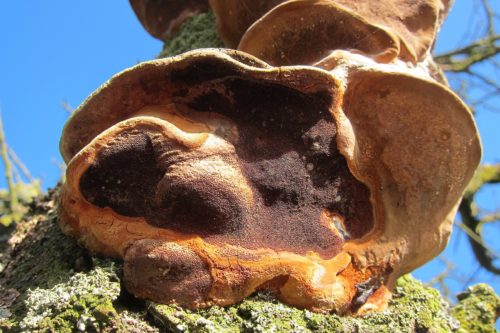Cushion bracket – this fungus is perennial and grows mainly on Prunus species.
Also known as:
Phellinus pomaceus
Phellinus tuberculosus
Cushion bracket (Phellinus tuberculosus). Cushion bracket grows mainly on Prunus species. The fungus is perennial and is composed of several tube layers; the more layers, the older the fungus. The flesh of the fungus is hard. The fungus often grows into a cushion shape, covered with a reddish-brown crust.
The Cushion bracket is found mainly on trunks and on the underside of branches of (ornamental) cherries from the Prunus family. The fungus is a necrotrophic parasite: the fungus kills the tree and lives as a parasite on the dead wood. The fungus is a slow grower: an old apple tree had been infested with this fungus for over thirty years. In all those years, the fungus had grown only a few inches without killing the tree.
The damage is not immediately visible. The formation of the fungus proceeds from within: the heartwood is affected. The affected tree becomes unstable and slowly weakens. The first signs of reduced vitality can be seen in the crown of the tree: branch death and leaf loss.
The Cushion bracket is rare.
Where to find
- Cherry tree (cultivars of Prunus avium)
- Japanese cherry (Prunus serrulata)
- Wild cherry (Prunus avium)
- Prunus subhirtella
- Blackthorn (Prunus spinosa)
- Plum Tree
- (old) Apple and pear
trees
Control
Difficult to to control; once the fungus becomes visible, the tree is doomed.
Prevention
Does not apply.

